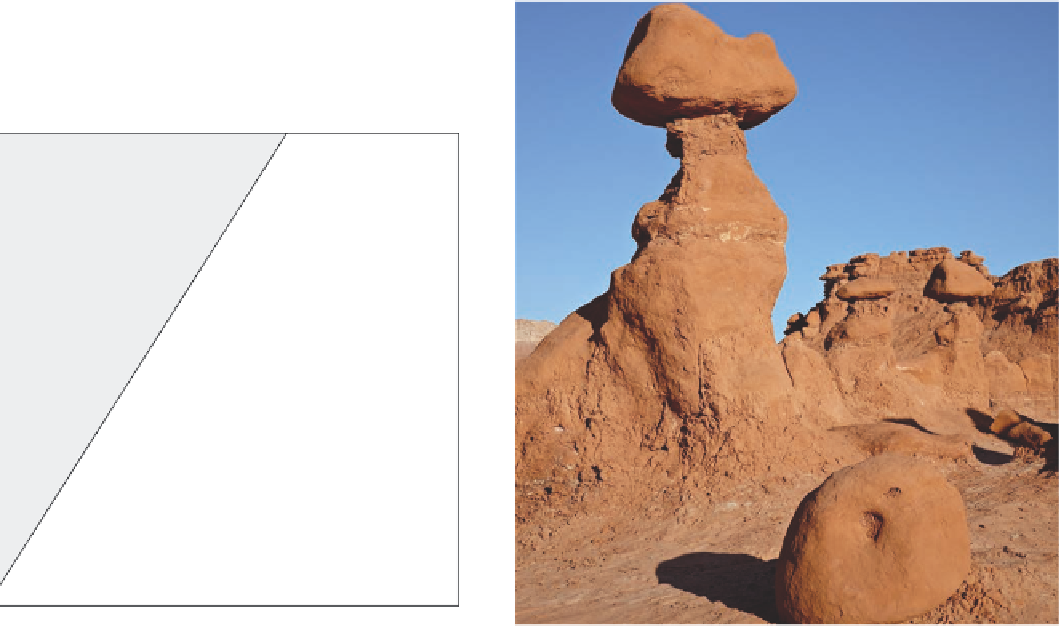Geoscience Reference
In-Depth Information
Weathering
Limestone, for example, is generally more resistant to physi-
cal weathering than shale. And within limestone rock masses,
the dolomite units are typically more resistant than chalky
rocks, which sometimes dissolve easily due to the chemical
interactions discussed in Chapter 15. It is also possible that
certain parts of an individual rock unit are more resistant
to weathering and erosion than others within the same unit
due to variations in the strength of the cementing materials.
This kind of differential cementation is particularly common
in sandstone. In places where this kind of variability ex-
ists within a rock outcrop or within an individual rock unit,
long-term weathering can have a noticeable impact and can
even result in very unusual landforms (Figure 14.2). Such a
weathering pattern is called
differential weathering
because
rock units weather at different rates. If a more resistant rock
layer overlies a less resistant layer, it protects the underlying
rock somewhat from erosion and is thus known as
caprock
.
Keep these variations in mind as you work your way through
this chapter.
The logical place to begin a discussion of landscape evolu-
tion is with the concept of weathering because it is often
the initial force that begins to wear rocks down. Recall from
Chapter 11 that
weathering
is the process by which rocks
break down or decay into smaller fragments. Two primary
kinds of weathering processes occur on Earth:
mechanical
(also called
physical
) and
chemical
. Although each of these
weathering processes can operate alone, they often work to-
gether to break rocks apart. Figure 14.1 shows the relation-
ship between these weathering processes and climate. Notice
that physical weathering is more pronounced in colder/drier
environments, whereas chemical weathering is related more
to warmer/wetter climates. The reasons for these environ-
mental relationships will become clear as you work through
the chapter.
An important factor that influences the amount or pat-
tern of weathering is the relative resistance of different kinds
of rock at an outcrop. Some rocks are simply harder than
others and are thus more resistant to weathering and erosion.
Mean annual
temperature
°
C (
°
F)
Moderate
physical
Cooler
-12(10)
No such
environment
Moderate chemical
with frost action
5(40)
Strong
chemical
Moderate
chemical
Very
slight
weathering
27(80)
Hotter
200
(80)
100
(40)
25 cm
(10) (in.)
Figure 14.2 The effects of differential weathering.
Differential
weathering occurs when rock resistance varies between or
within individual rock units. This form of weathering often leaves
unusual rock forms, such as this
hoodoo
in Arches National Park
in Utah. In this particular example, the caprock is a sandstone
that is more resistant to weathering than the underlying rock
layer.
Mean annual rainfall
Wetter
Dryer
Figure 14.1 The geography of weathering.
Physical weather-
ing dominates in colder, drier environments, whereas chemical
weathering tends to prevail in warmer, wetter regions (although
some overlap occurs).
Weathering
Physical or chemical modification of rock or
sediment that occurs over time.
Caprock
A unit of relatively resistant rock that caps the top
of a landform and thus protects underlying rocks from erosion.






















